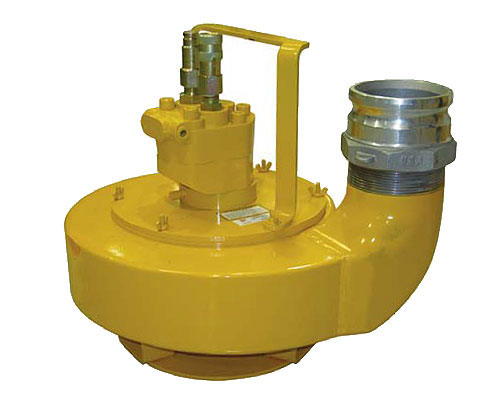Related Resources: pumps
Trash Pumps
What is a trash pump?
Trash pumps, also referred to as sludge pumps, grinder pumps, chopper pumps, or wastewater pumps, are designed to handle solids-laden fluids. These could include trash, mud, natural debris, fish and animal processing plant waste, and fluids containing sand, gravel, crushed stone, and concrete chips from construction sites.
These pumps are useful in many applications, including construction dewatering, trash processing at manufacturing or waste processing facilities, and industrial or agricultural complexes that generate large amounts of difficult-to-pump waste.
 |
How do they work?
Designed to move heavy and viscous fluids containing abrasive solids, trash pumps are typically heavy-duty pieces of machinery that require hardened wearing parts and frequent maintenance. In addition to standard power requirements, some types include a chopper apparatus that uses rotating cutter teeth mounted to the front or back of the impeller to crush larger solids into more manageable pieces before they continue.
Most trash pumps are a centrifugal pump type; they rely on a rotating impeller immersed in the pumped liquid to increase its velocity. As the liquid moves from the impeller vanes, it moves into a volute casing that converts the high velocity into high pressure (head) as it exits the pump. This high pressure enables the liquid to overcome elevation, friction, and pressure head requirements of the system.
Many pumps can also be classified as submersible pumps, which indicates that they sit submerged in the pumped fluid; these trash pumps are directly attached to a motor that can operate in the fluid.
Other trash pump types feature a vertical column sump pump design, which entails a grade-mounted motor at the top of the sump and a vertical column that encloses a shaft attached to an impeller. The impeller and volute casing in this case are located towards the bottom of the sump. These types may also include a screen at the inlet of the pump casing, which prevents solids larger than a certain diameter from passing into the pump.
Contributed by PumpScout staff
Link to this Webpage:
© Copyright 2000 -
2024, by Engineers Edge, LLC
www.engineersedge.com
All rights reserved
Disclaimer |
Feedback
Advertising
| Contact